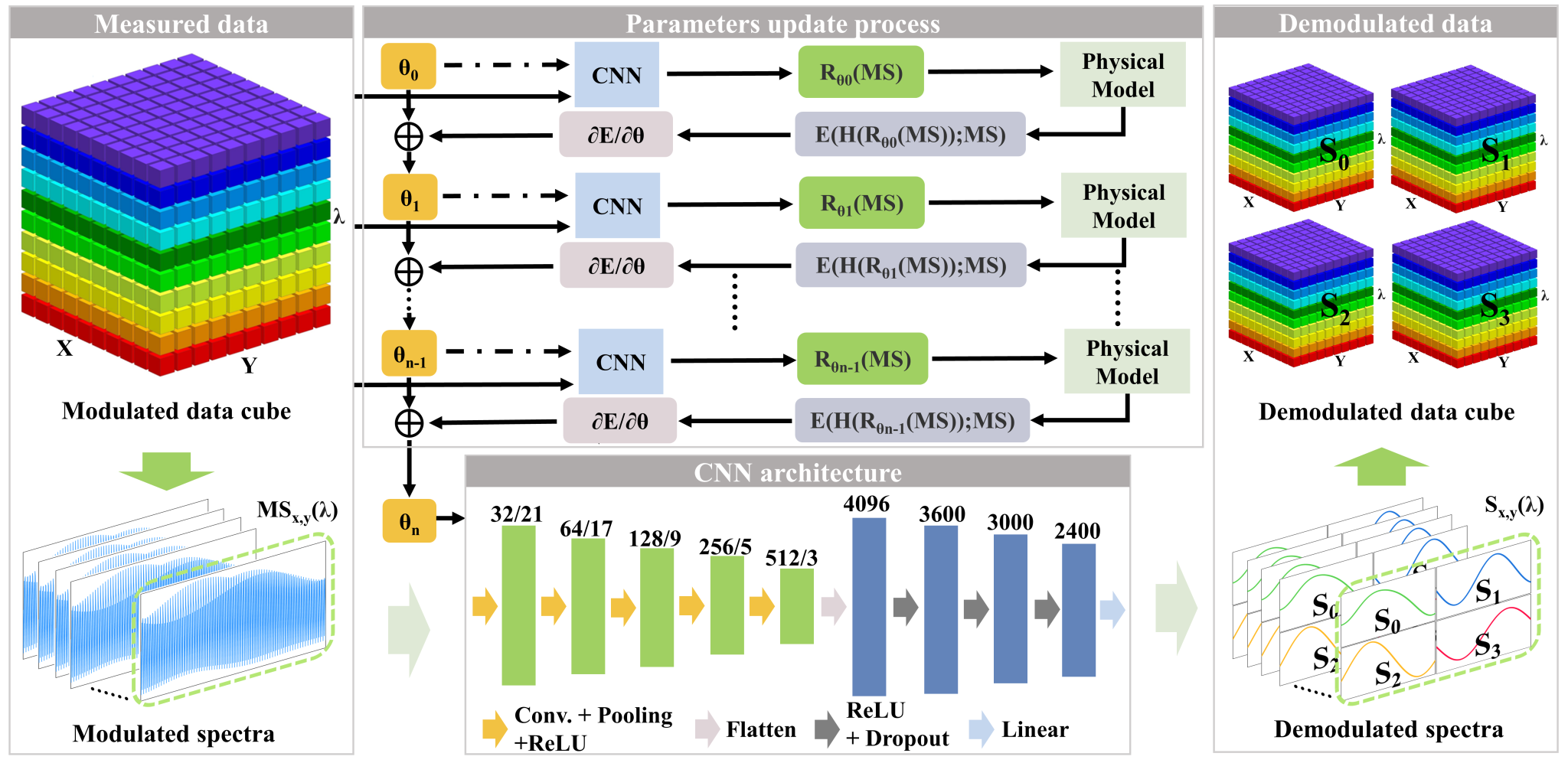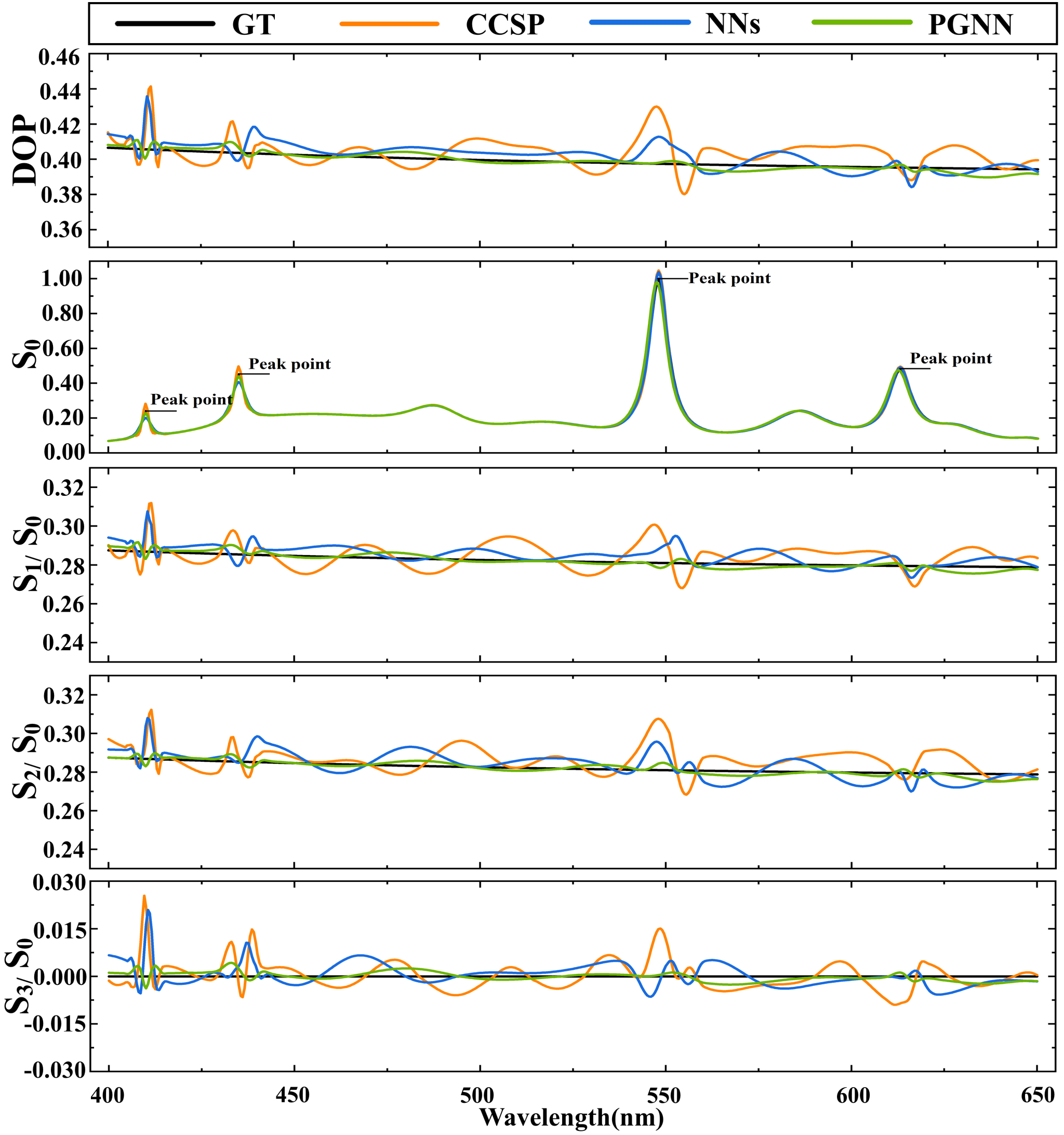Recently, the team of optical field manipulation and nano-photonics has made significant progress in the real-time, high-precision acquisition of spectral polarization information. Their research findings, titled "Physics-guided neural network for channeled spectropolarimeter spectral reconstruction," have been published in "Optics Express" (31(15), 24387-24403 (2023)).
High-precision optical remote sensing detection is a critical technological requirement in fields such as national defense and environmental monitoring. In recent years, a novel optical detection technology known as imaging spectropolarimetry, which effectively combines imaging, spectral detection, and polarization analysis, has gradually emerged as a hot topic in advanced optical imaging research. Among these technologies, the channeled spectropolarimeter (CSP), designed based on polarization spectral intensity modulation, has gained prominence. By modulating and demodulating the incoming light, CSP enables static, snapshot-style, full Stokes parameter spectral measurements, providing an effective means to acquire real-time and precise spectral polarization information for targets. The optical setup and measurement principles are illustrated in Figure 1. However, obtaining high-precision and quantitative demodulated data has always been one of the challenges hindering the high-performance application of CSP.

Fig. 1 Principle of channeled spectropolarimeter. (a) Construction of the PSIM module.(b) Optics of the channeled spectropolarimeter based on a Offner grating spectrometer. (c)Stokes parameters spectra of the target obtained by reconstruction method. (d) Modulated spectrum of the target is obtained by extracting the pixel information corresponding to the same spatial dimension. (e) Area array CCD of the channeled spectropolarimeter, the vertical direction represents the spectral dimension and the horizontal direction represents the spatial dimension.

Fig. 2 Workflow of PGNN.

Fig. 3 Reconstruction results of compact fluorescent lamp.
In response to the aforementioned challenges, Professor Jigang Hu's team has devised an innovative solution. They have harnessed the prior information embedded in the CSP's physical model and combined it with the potent modeling capabilities of deep neural networks (DNN). This novel approach has led to the creation of a physics-guided neural network (PGNN), which achieves ultra-high precision and rapid demodulation of modulated data. The workflow is depicted in Figure 2. In contrast to traditional DNN-based methods, PGNN's network parameters initiate with random values and are refined through gradient descent algorithms to obtain precise estimates. This process establishes the mapping relationship between modulated spectra and Stokes parameter spectra. The physical model plays a primary role in constraining the network parameters during the optimization process, thereby providing physical guidance to the DNN's output.
The effectiveness of this work was validated through a combination of simulations and experiments, showcasing PGNN's exceptional capability for ultra-high precision and rapid demodulation of modulated spectra. Figure 3 illustrates the results of modulated spectral demodulation for a compact fluorescent lamp light source. These research findings not only provide an effective solution for advancing the high-performance applications of CSP but also offer a new method for obtaining high-precision data in other similar spectral imaging devices.
This work was a collaborative effort between Hefei University of Technology and the Anhui Institute of Optics and Fine Mechanics, Chinese Academy of Sciences. Dr. Chan Huang, a young faculty member in the School of Physics, served as the first author of the paper, and Professor Jigang Hu is the corresponding author. The research received support from the National Key Research and Development Program of China, the National Natural Science Foundation of China , and the Fundamental Research Funds for the Central Universities.
Link to the original research paper: https://opg.optica.org/oe/fulltext.cfm?uri=oe-31-15-24387&id=532612